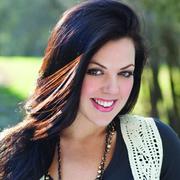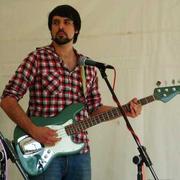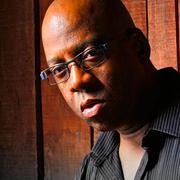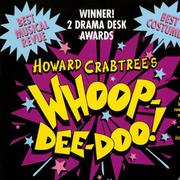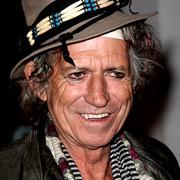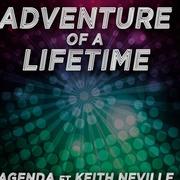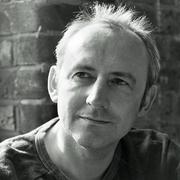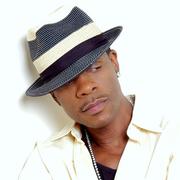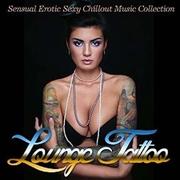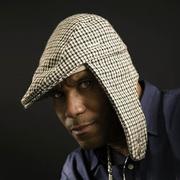Keith Jarrett
| 基本信息 | |||
|---|---|---|---|
| 姓名 | Keith Jarrett | 别名 | 暂无 |
| 国籍 | 欧美 | 出生地 | |
| 语言 | 性别 | 男 | |
| 生日 | 星座 | ||
| 身高 | 体重 | ||
在爵士音乐史上,很少有乐手具有象钢琴演奏家Keith Jarrett那样的才华。也许,许多Keith Jarrett乐迷都是在最初接触到他的音乐时就被其中的多样性所吸引,对他们来说,Jarrett的音乐打开了一扇门,门内是一片崭新的爵士乐天地,同时也是Keith Jarrett的内心世界。一般而言,黑人爵士乐手在演奏时会更注重感官上的刺激,以达到情感宣泄的目的,他们所缺乏的是一种更为具象的思考;白人爵士乐手虽然注重了理性,但从本源上讲,爵士乐是一种黑人音乐,白人的情感较难触及其泥土中的根。尽管Keith Jarrett是白人,但他在演奏时嘴里总爱下意识地哼着旋律。这一点很象许多黑人爵士乐手,也许,Jarrett天生就是演奏爵士乐的人,他在情感与理智间寻找到了一个很好的平衡。Keith Jarrett于1945年5月8日出生在美国宾夕法尼亚州的艾伦镇(Allentown)。他的父母很早就发现了他的音乐天赋,于是,在Jarrett仅3岁时,他们便请人向他传授钢琴,不久后,Jarrett开始尝试作曲。他6岁时举行了首场个人音乐会。音乐会结束时,Jarrett还演奏了两首自己创作的曲子。Keith Jarrett从小所受的是正统的古典音乐教育,而对爵士乐产生兴趣是在10岁以后。最初,他是Stan Kenton开设的爵士课程中最年幼的学员,之后,他跟随了Fred Waring的乐队四处巡演。60年代中期,Jarrett结束了波士顿“伯克利音乐学校”为期一年的学业前往纽约发展。一次在Village Vanguard的偶然演出中他被鼓手Art Blakey相中,并加入了Blakey的“New Jazz Messengers”(新爵士使者乐队)。不久,Keith Jarrett转入了萨克斯风手、自由爵士音乐家Charles Lloyd的四重奏。同时,Jarrett与Bill Evans的鼓手Paul Motian以及Ornette Coleman的贝司手Charlie Haden组成了“Keith Jarrett三重奏”。这样的组合绝非巧合,它反映了Bill Evans以及自由爵士乐对于Jarrett的影响。Keith Jarrett很少演奏电钢琴,他曾坦言自己不喜欢电子化的音乐。但这并不妨碍Miles Davis邀请Jarrett加入他的乐队的诚意,在Miles Davis的几次盛情相邀之下,Keith Jarrett成为了Miles Davis的“Fusion”(融合爵士)团体的次席键盘手。在Miles Davis的专辑《菲尔摩音乐会》中,Jarrett协助Davis登上了Fusion的的巅峰。by Scott YanowOne of the most significant pianists to emerge since the 1960s, Keith Jarrett maintained a career that went through several phases. He gained international fame for his solo concerts, which found him spontaneously improvising all of the music without any prior planning, but he also led a couple of dynamic quartets/quintets, performed classical music, and later played explorative versions of standards with his longtime trio. Although his tendency to sing along with his piano now and then is distracting, Jarrett continued to grow as a powerful improviser after decades of important accomplishments.Jarrett started on the piano when he was three, and by the time he was seven he had already played a recital. A child prodigy, Jarrett was a professional while still in grade school. In 1962, he studied at Berklee, and then started working in the Boston area with his trio. He moved to New York in 1965, and spent four months with Art Blakeys Jazz Messengers. As a member of the very popular Charles Lloyd Quartet (1966-1969), Jarrett traveled the world and became well-known; he also began doubling occasionally on soprano (which he would utilize through the 1970s). During 1969-1971, he was with Miles Davis fusion group, playing organ and electric keyboards; Chick Corea was also in the band for the first year. Jarrett can be heard battling Corea throughout Davis Live at the Fillmore, but is in more creative form on Live/Evil.Upon leaving Miles Davis, Jarrett permanently swore off electric keyboards. He had cut sessions as a leader for Vortex (1967-1969) and Atlantic (1971), but starting in November 1971, he recorded extensively for ECM (in addition to some sessions in the 1970s for ABC/Impulse), an association that continued into the 2000s. In the 1970s, Jarrett led two groups: an exciting unit with Dewey Redman, Charlie Haden, Paul Motian, and occasional percussionists (often Guilherme Franco); and a European band with Jan Garbarek, Palle Danielsson, and Jon Christensen that recorded the popular My Song. In addition, starting in 1972 Jarrett began his famous series of improvised concerts that resulted in such popular recordings as Solo Concerts, Köln Concert, and the mammoth Sun Bear Concerts. By the 1980s, Jarrett was performing classical music as much as jazz, but in the 1990s he recorded extensively (including a six-CD live set) with his standards trio, which included Gary Peacock and Jack DeJohnette. Although initially influenced by Bill Evans, Jarrett has had an original and influential style of his own since the early 70s, and remains a vital force in jazz.
 加载评论内容,请稍等......
加载评论内容,请稍等......



